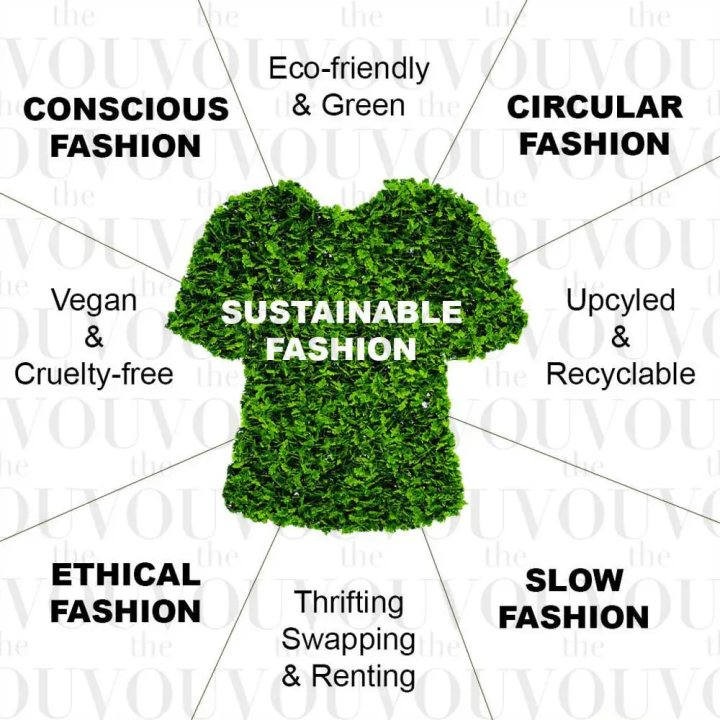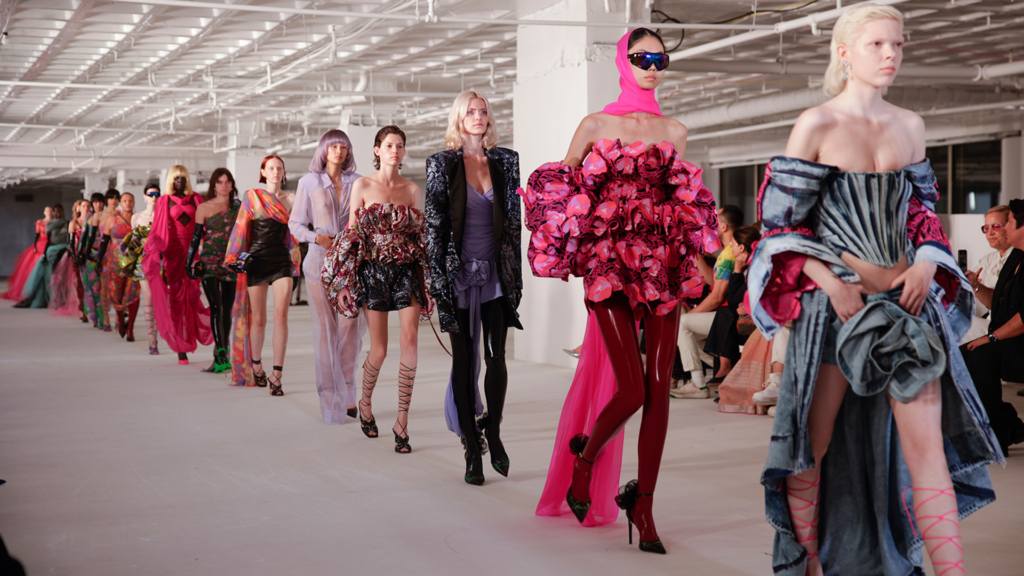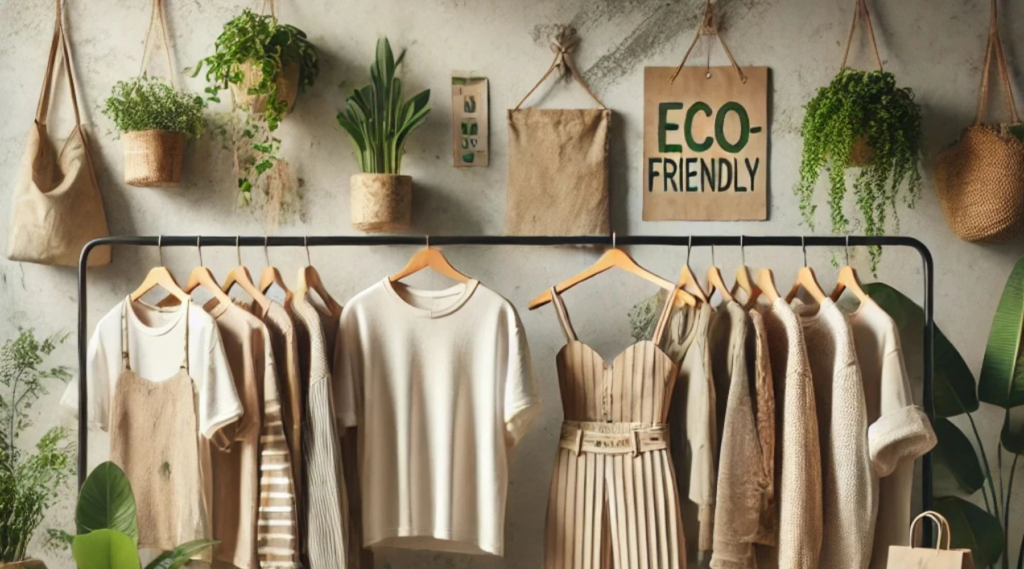In 2025, the fashion industry in the United States is undergoing a green revolution. Consumers are increasingly turning to eco-friendly clothing brands, thrift shopping, and sustainable fabrics to reduce their environmental impact. This shift reflects a growing awareness of the fashion industry’s toll on the planet and a desire to make more ethical, sustainable choices. From innovative materials to second-hand treasures, here’s a look at why eco-friendly fashion is dominating trends this year and how it’s reshaping the way Americans shop for clothes.

The Rise of Eco-Conscious Consumers
The fashion industry has long been criticized for its environmental footprint. Fast fashion, with its rapid production cycles and low-cost garments, contributes to massive waste, pollution, and carbon emissions. Producing a single pair of jeans, for instance, can require thousands of gallons of water. Add to that the chemicals used in traditional cotton farming and synthetic dyes, and it’s clear why change is needed. In 2025, American consumers, especially younger generations like Gen Z and Millennials, are demanding more transparency and sustainability from the brands they support.
A recent survey showed that 67% of U.S. consumers consider sustainability a key factor when choosing clothing brands. Many are willing to pay a premium—up to 9.7% more—for sustainably produced goods, even in the face of economic challenges like inflation. This shift in mindset is driving the popularity of eco-friendly clothing brands that prioritize ethical production, low-impact materials, and fair labor practices.

Sustainable Fabrics: The Heart of Eco-Friendly Fashion
At the core of the 2025 eco-friendly fashion trend is the use of sustainable fabrics. These materials are designed to minimize environmental harm while maintaining quality and style. Organic cotton, for example, is a standout choice. Unlike conventional cotton, which relies heavily on pesticides and water, organic cotton is grown without synthetic chemicals and uses up to 91% less water. Brands like EILEEN FISHER and MATE the Label are leading the way, offering organic cotton garments that are soft, durable, and kind to the planet.
Recycled materials are also gaining traction. Recycled polyester, made from plastic bottles or discarded textiles, reduces the need for virgin materials and keeps waste out of landfills. Similarly, recycled nylon, such as Econyl, transforms ocean plastic and fishing nets into high-quality fabrics. Brands like Patagonia and Adidas are embracing these materials, with Patagonia pledging 1% of its sales to environmental causes and Adidas introducing initiatives like the Made to Be Remade program to promote circularity.
Innovative fabrics are pushing boundaries even further. Designers are experimenting with biodegradable materials like Piñatex, made from pineapple leaves, and Mylo, a mushroom-based leather alternative. These plant-based options require fewer resources and decompose naturally, unlike traditional leather, which contributes to deforestation and greenhouse gas emissions. Other exciting developments include hemp, which grows quickly with minimal water, and bamboo, known for its softness and low environmental impact. These fabrics are not only eco-friendly but also appeal to consumers looking for unique, high-quality pieces.

Thrift Shopping: A Sustainable and Stylish Choice
Thrift shopping has become a cornerstone of the eco-friendly fashion movement in 2025. Once seen as a budget-friendly option for low-income households, thrifting is now a mainstream trend embraced by fashion enthusiasts of all backgrounds. Second-hand stores like Goodwill, online platforms like ThredUp, and local vintage shops are booming as consumers seek unique, affordable clothing while reducing waste.
Thrifting extends the lifespan of garments, cutting down on the demand for new production. This is critical, as the fashion industry produces 116 million tons of textiles annually, much of which ends up in landfills. By choosing pre-loved clothing, shoppers are keeping garments in circulation longer and reducing their carbon footprint. For example, buying a second-hand jacket instead of a new one can save the equivalent of several months’ worth of carbon emissions.
However, thrifting isn’t without its challenges. The surge in popularity has led to higher prices in some thrift stores, making it harder for low-income shoppers to access affordable clothing. Additionally, the influx of fast fashion items in second-hand markets means that not all thrifted pieces are high-quality or long-lasting. To shop sustainably, experts recommend looking for timeless pieces made from natural or durable materials and avoiding items that show signs of wear or poor craftsmanship.
Circular Fashion: Closing the Loop
The concept of circular fashion is gaining momentum in 2025. Unlike the traditional “take-make-dispose” model of fast fashion, circular fashion focuses on keeping clothes in use for as long as possible through reuse, repair, and recycling. Brands like Whimsy + Row and Shaina Mote are leading the charge by producing limited-run collections from deadstock fabrics—materials that would otherwise go to waste. These brands also prioritize ethical manufacturing and fair labor practices, ensuring that their supply chains are as sustainable as their products.
Repair programs are another key aspect of circular fashion. Companies like Patagonia offer repair services to extend the life of their garments, encouraging consumers to mend rather than replace. Some brands are even teaching customers how to repair their own clothes, fostering a culture of mindful consumption. Additionally, clothing swaps and resale platforms are making it easier for people to exchange or sell unwanted items, further reducing textile waste.
The second-hand clothing market is expected to account for 10% of global fashion sales in 2025, a testament to the growing popularity of circular fashion. Organizations like Clothes Aid are also playing a vital role by collecting and redistributing donated clothing, ensuring that preloved garments find new homes instead of ending up in landfills.
Eco-Friendly Brands to Watch in 2025
Several U.S.-based brands are setting the standard for sustainable fashion in 2025. EILEEN FISHER, a certified B Corp, is a pioneer in ethical fashion, using organic linen and Fair Trade-certified materials while overseeing its supply chain to ensure fair wages. MATE the Label focuses on cozy, everyday essentials made from organic cotton and nontoxic dyes, with a commitment to plastic-free packaging. Whimsy + Row, based in Los Angeles, creates feminine tops and matching sets from deadstock and organic materials, emphasizing carbon-neutral production.
Rujuta Sheth, a New York-based designer, combines traditional Indian techniques with modern designs, using handwoven textiles and AZO-free dyes. Shaina Mote, another Los Angeles brand, focuses on capsule wardrobes with low-impact production, offering timeless pieces that stand the test of time. On a larger scale, Patagonia continues to innovate with recycled fabrics and environmental activism, while Adidas pushes for circularity through programs like Wear Longer.
Challenges and Opportunities
Despite the progress, sustainable fashion faces challenges. One major hurdle is the higher cost of eco-friendly clothing, which can deter budget-conscious shoppers. According to a 2023 survey, 56% of U.S. consumers find sustainable clothing too expensive, highlighting the need for more affordable options. Additionally, some brands engage in “greenwashing,” making misleading claims about their sustainability practices. To combat this, consumers are encouraged to look for certifications like GOTS, Fairtrade, and OEKO-TEX, which verify ethical and environmental standards.
On the opportunity side, technology is playing a big role in advancing sustainable fashion. Virtual fitting rooms and 3D body scanning reduce returns and shipping emissions, while blockchain and AI improve supply chain transparency. Innovations like bioengineered fabrics and eco-friendly dyes are also making it easier for brands to produce stylish, sustainable clothing without compromising quality.
How Consumers Can Embrace the Trend
For those looking to join the eco-friendly fashion movement in 2025, small changes can make a big difference. Start by assessing your wardrobe and identifying pieces you no longer wear. Donate these to second-hand stores or clothing swaps to keep them in circulation. When shopping, prioritize quality over quantity, choosing timeless garments made from sustainable fabrics like organic cotton, hemp, or recycled polyester. Check for certifications to ensure brands align with your values.
Caring for your clothes properly can also extend their lifespan. Wash garments at lower temperatures, air dry when possible, and repair minor damages promptly. Exploring thrift stores, vintage shops, and online resale platforms is a fun and sustainable way to find unique pieces while reducing your environmental impact.
Looking Ahead
The eco-friendly clothing trend in 2025 is more than a passing fad—it’s a movement toward a more sustainable future. With consumers favoring thrift shopping, sustainable fabrics, and circular fashion, the industry is being forced to rethink its practices. Brands like EILEEN FISHER, Patagonia, and MATE the Label are leading the way, proving that style and sustainability can go hand in hand. By making mindful choices, American shoppers are not only refreshing their wardrobes but also helping to protect the planet for future generations. As the demand for eco-friendly fashion grows, 2025 is shaping up to be a pivotal year for a greener, more ethical fashion industry.
Read more :- Top 10 Best American Superfoods That Boost Immunity Naturally





